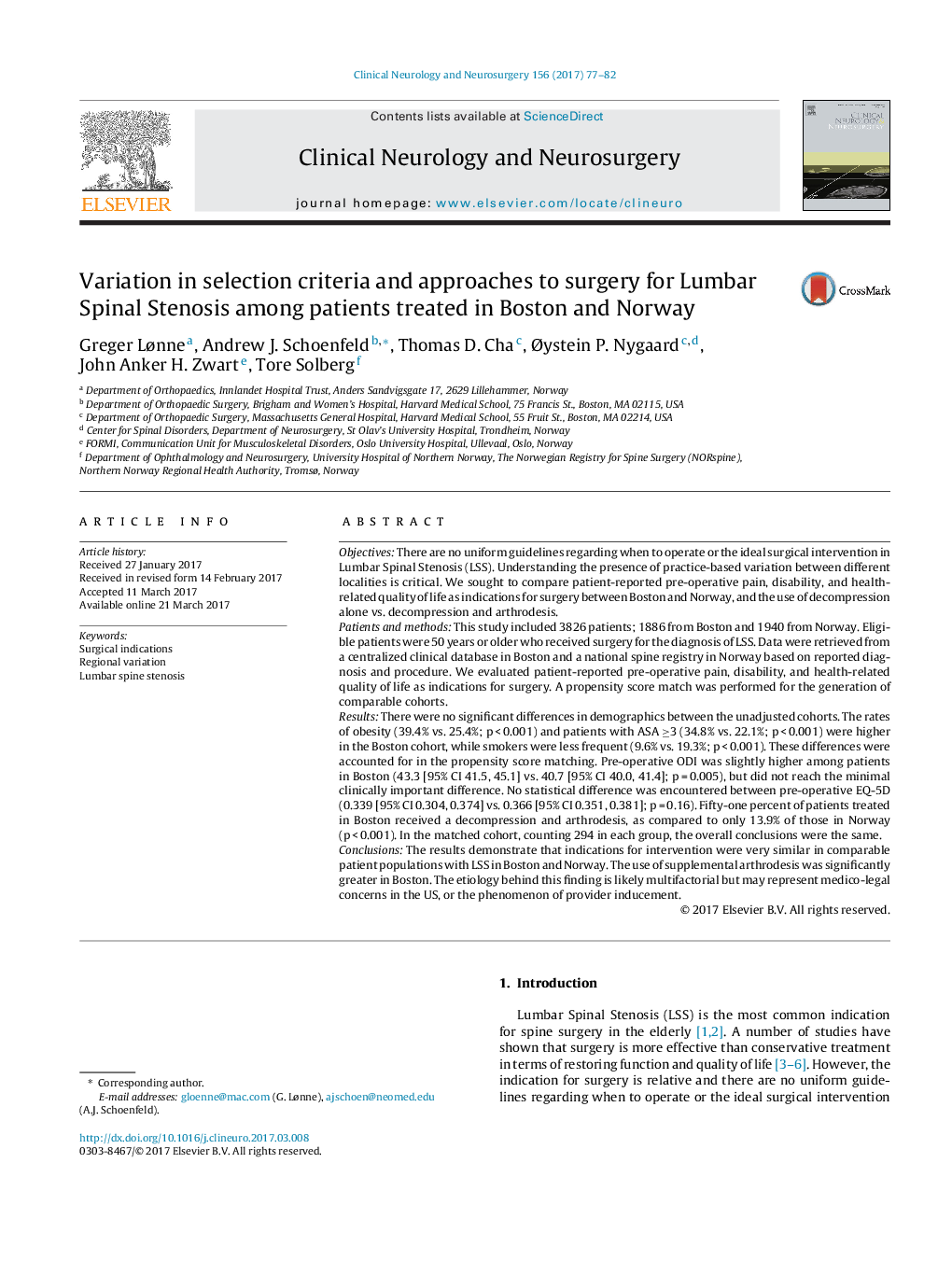| Article ID | Journal | Published Year | Pages | File Type |
|---|---|---|---|---|
| 5627123 | Clinical Neurology and Neurosurgery | 2017 | 6 Pages |
ObjectivesThere are no uniform guidelines regarding when to operate or the ideal surgical intervention in Lumbar Spinal Stenosis (LSS). Understanding the presence of practice-based variation between different localities is critical. We sought to compare patient-reported pre-operative pain, disability, and health-related quality of life as indications for surgery between Boston and Norway, and the use of decompression alone vs. decompression and arthrodesis.Patients and methodsThis study included 3826 patients; 1886 from Boston and 1940 from Norway. Eligible patients were 50 years or older who received surgery for the diagnosis of LSS. Data were retrieved from a centralized clinical database in Boston and a national spine registry in Norway based on reported diagnosis and procedure. We evaluated patient-reported pre-operative pain, disability, and health-related quality of life as indications for surgery. A propensity score match was performed for the generation of comparable cohorts.ResultsThere were no significant differences in demographics between the unadjusted cohorts. The rates of obesity (39.4% vs. 25.4%; p < 0.001) and patients with ASA â¥3 (34.8% vs. 22.1%; p < 0.001) were higher in the Boston cohort, while smokers were less frequent (9.6% vs. 19.3%; p < 0.001). These differences were accounted for in the propensity score matching. Pre-operative ODI was slightly higher among patients in Boston (43.3 [95% CI 41.5, 45.1] vs. 40.7 [95% CI 40.0, 41.4]; p = 0.005), but did not reach the minimal clinically important difference. No statistical difference was encountered between pre-operative EQ-5D (0.339 [95% CI 0.304, 0.374] vs. 0.366 [95% CI 0.351, 0.381]; p = 0.16). Fifty-one percent of patients treated in Boston received a decompression and arthrodesis, as compared to only 13.9% of those in Norway (p < 0.001). In the matched cohort, counting 294 in each group, the overall conclusions were the same.ConclusionsThe results demonstrate that indications for intervention were very similar in comparable patient populations with LSS in Boston and Norway. The use of supplemental arthrodesis was significantly greater in Boston. The etiology behind this finding is likely multifactorial but may represent medico-legal concerns in the US, or the phenomenon of provider inducement.
